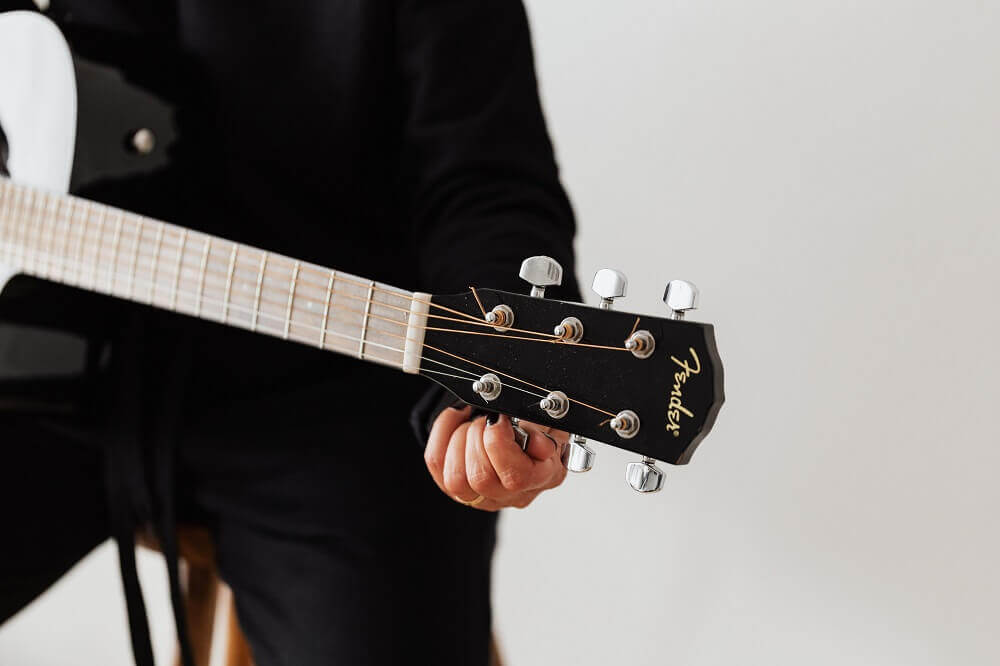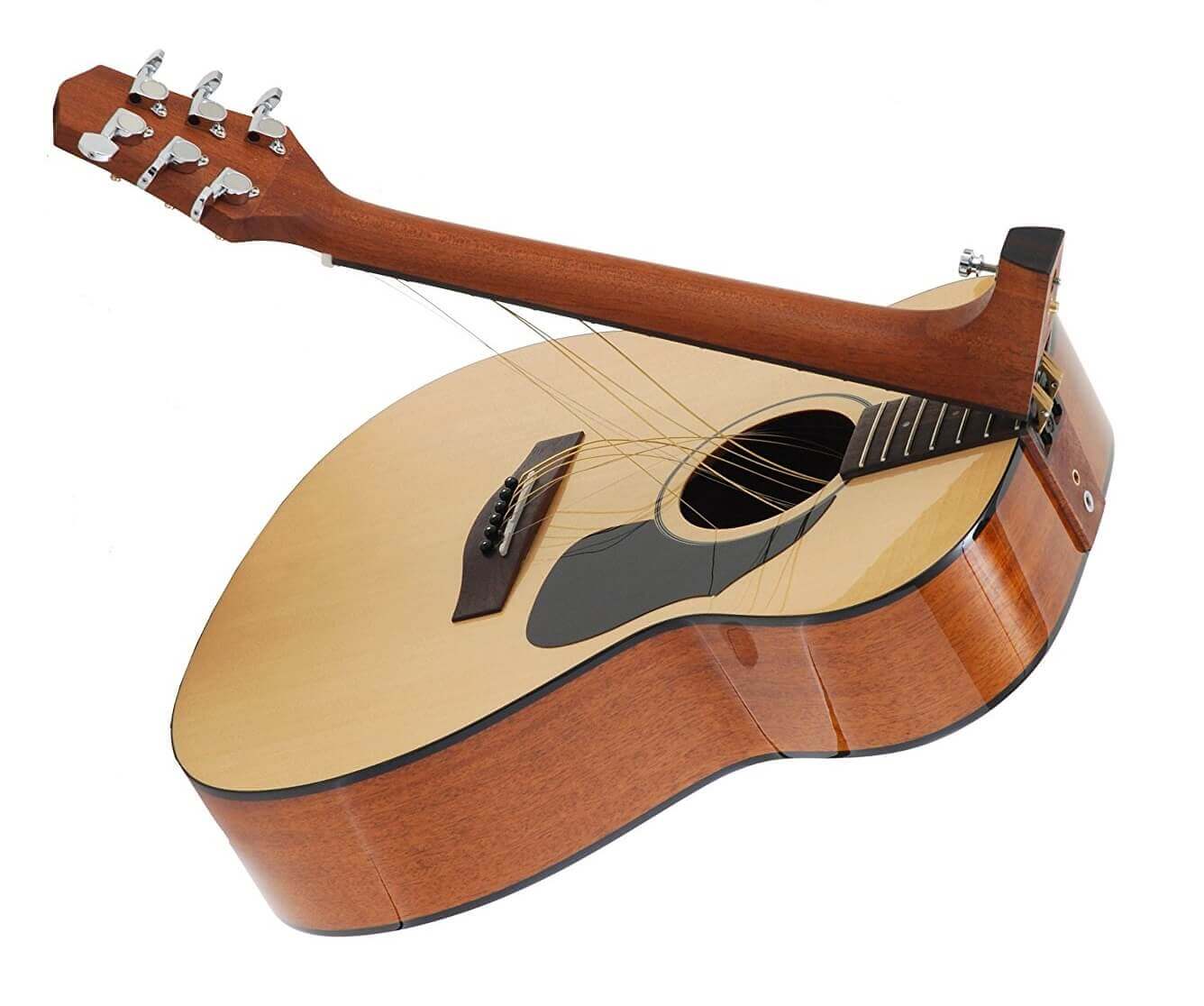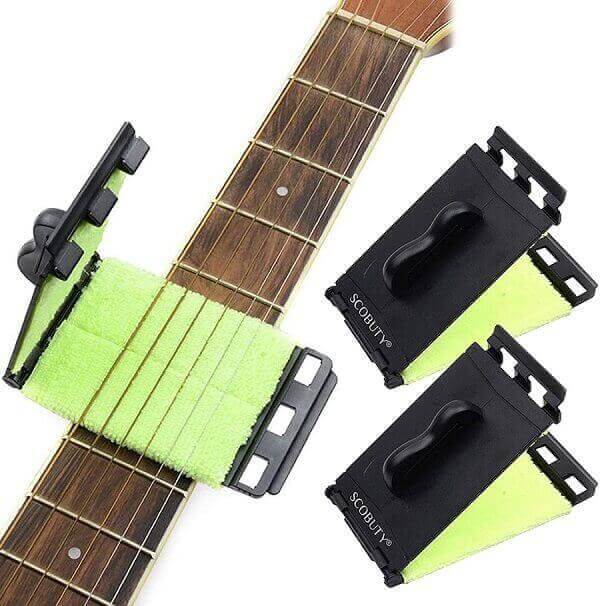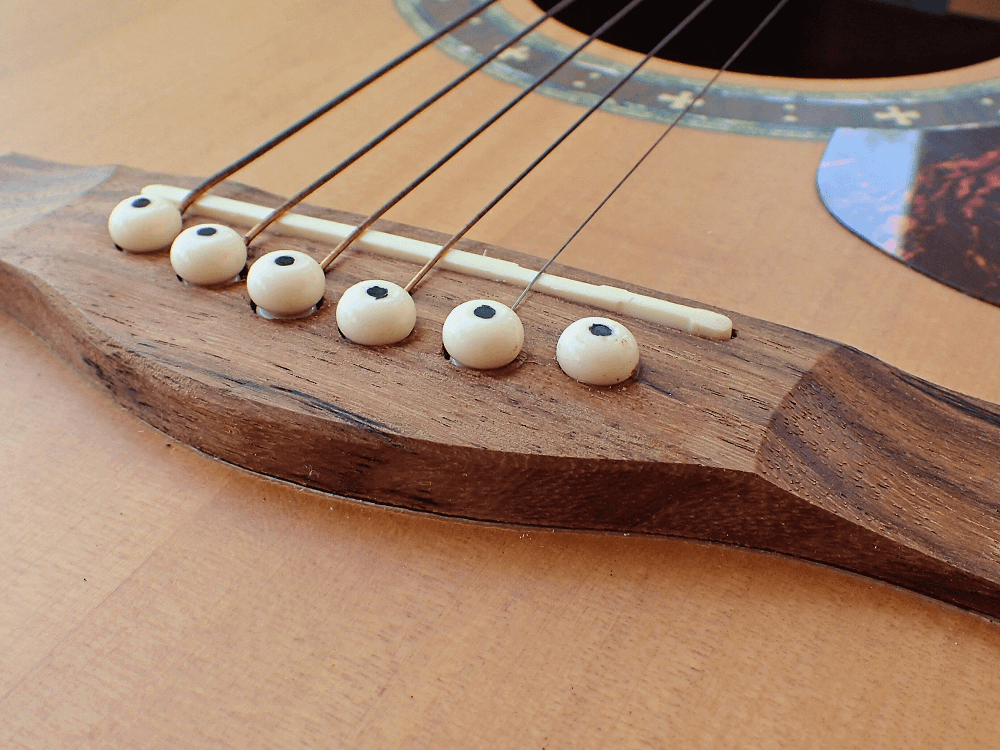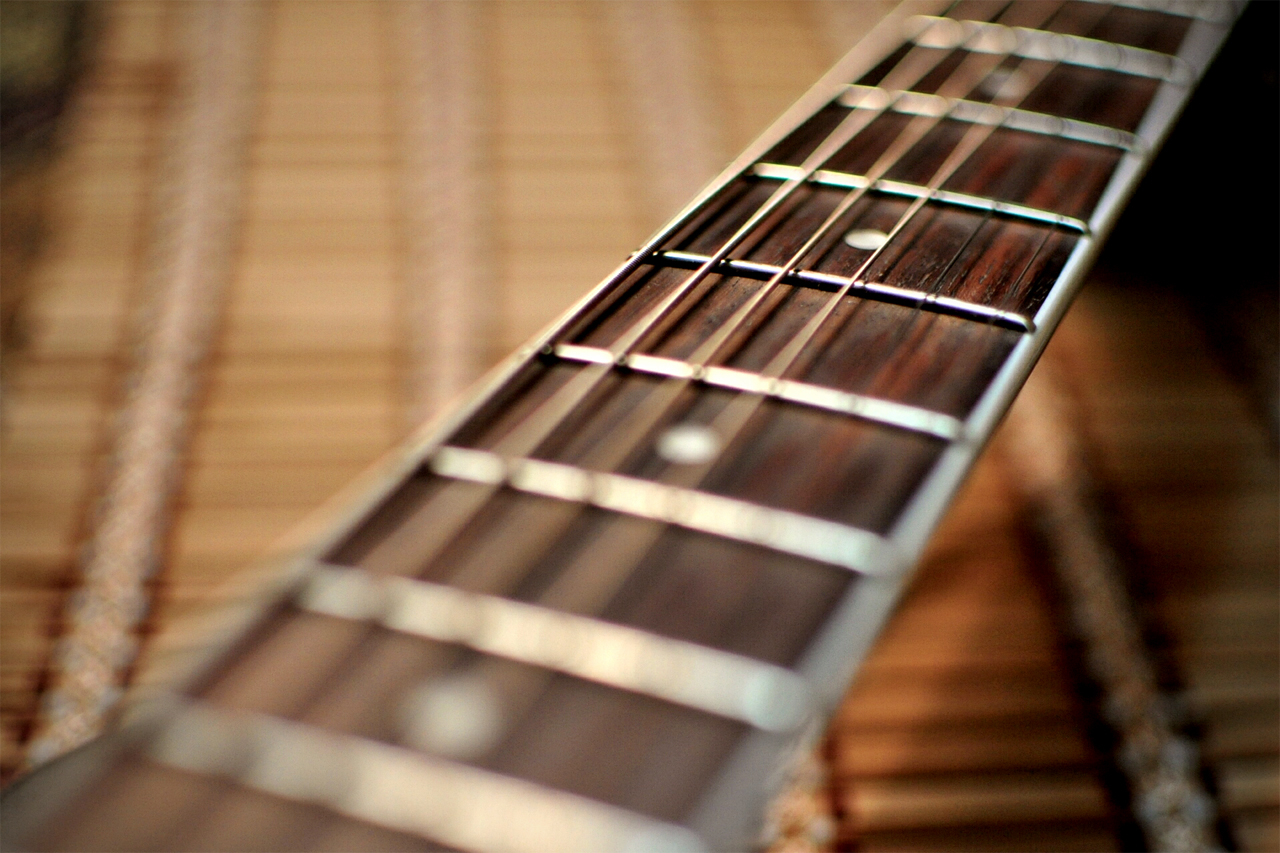Should you loosen your guitar strings when not in use?
Having your guitar strings in excellent condition is key, but what would be the effects of leaving them in tune even when you’re not playing?
On the other hand, what would be the consequences of loosening them every single day?
Is it necessary to do this? Is this something that’s just recommended for long-term storage?
In this post, I will be giving you the answers to all of those questions.
But aside from that, I will also help you understand the importance of humidity and temperature control, and how to maintain the quality of your guitar in good standings.
Table of Contents
- Should you loosen your guitar strings when not in use?
- Best guitar storage tips to keep your instrument safe
- Does your guitar strings gauge make any difference?
- Can you take off all guitar strings at once while in storage?
- Do unused guitar strings go bad?
- Should you loosen your strings when you travel?
- How to maintain the quality of guitar strings when not in use?
- Conclusion
Should you loosen your guitar strings when not in use?
The quick answer is that, no, it’s not necessary to loosen your guitar strings when not in use. This is especially true if your guitar has decent quality; most of them are specifically built to handle the tension of the strings regardless of how you store your instrument. Other factors include how long you’re planning on not playing your guitar and the room or environment in which you’re keeping it at.
Now, if you’re interested in learning more about this topic, I encourage you to keep on reading as I will also answer some of the most frequently asked questions that people tend to have around this subject.
To start, these are some of the factors that you must consider:
1- The brand and build of your guitar
Putting your guitar to the side is never really the problem unless you’ve got in your hands a low-quality guitar.
Therefore, try to avoid opting for knock-offs which do cost cheaper at first, but because of their poor quality and high regular upkeep, it will eventually cost you more in the long-term.
Different brands or companies build their guitars using very similar approaches, but ultimately, some of them do vary how they design their instruments.

This is where doing a little bit of research on how your own guitar was built is very helpful.
Almost every guitar manufacturer has a manual or a guide in which they introduce and talk about each model that they put out.
If I were you, I would look for how they build their guitar necks and specifically their truss rod system.
A truss rod, according to Wikipedia:
Is a component of a guitar or other stringed instruments that stabilizes the lengthwise forward curvature, of the neck. Usually, it is a steel bar or rod that runs inside the neck, beneath the fingerboard.
In other words, this is exactly what keeps your guitar neck straight!
Once you check that your guitar has a truss rod (which most of them do), then you don’t need to worry about loosening your strings at all.
If you have a classical guitar, then you might find out that your model doesn’t have a truss rod, but even in this case, their nylon strings don’t pull on the neck as hard as other guitars do.
So, once again, you won’t be needing to detune and tune your guitar consistently.
2- Type of guitar and design of your instrument
So, we learned that a truss rod is that it’s highly adjustable and does an excellent job at counteracting the tension of the steel strings.
It also bends the neck back against the string pressure, which like it was said before, lets the neck stay stable and straight.
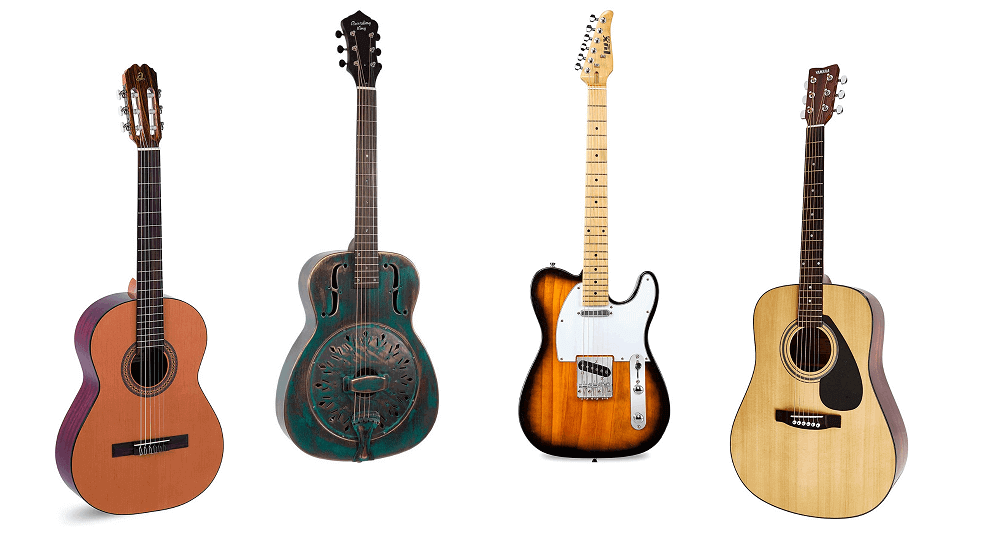
The best part about strings or truss rods is that, in general, they let you “fix mistakes!”
If you mess up and leave your guitar strings on for years without taking care of it, you will be able to fix anything that might have gone wrong; an overly curved neck, for example.
If in our last point we talked about researching the brand and company or your instrument, in this case, you should also take note of the type of guitar that you’re playing.
Generally, instruments require the same care and maintenance, but it is more than recommended to be specific when it comes to this stuff.
An acoustic guitar is not the same as an electrical, and a classical guitar is not the same as a slide guitar.
3- Materials that were used to build your guitar
All guitars are durable enough!
However, sometimes the real problem arises not because of the strings but the quality of the wood.
Like strings, you will get to see a significant reduction in your guitar’s performance if you have a knock-off brand.
Remember, good guitars are generally made up of solid wood instead of laminated wood or plywood.
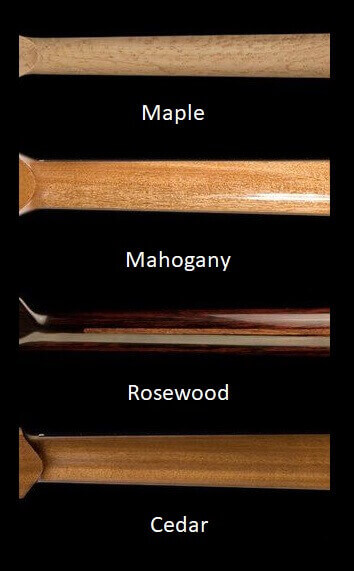
Image Source: mangore.com
Nothing wrong with having laminated wood on your guitar, though.
In fact, Reverb.com couldn’t have said it better:
Due to the nature of their construction and their more complex patterns of overlapping grains, laminate guitars are far less susceptible to cracking. For this reason, they tend to be better suited for players who travel or for those individuals who simply require a more sturdy guitar.
In other words, original solid wood is quite likely to deteriorate when exposed to high humidity or temperature, while laminated woods are more resistant to these atmospheric changes.
4- Long-term guitar storage vs. short-term storage
Your guitar’s storage should depend on whether you are thinking of not using it on a long-term basis or not.
As mentioned earlier, if you are playing every now and then, you don’t have to worry about loosening your strings at all.
To put it another way, you don’t have to detune it every time you’re done playing the guitar.
However, if you plan not to touch it for a few months or even years, I’d suggest you slacken the strings (personal opinion).
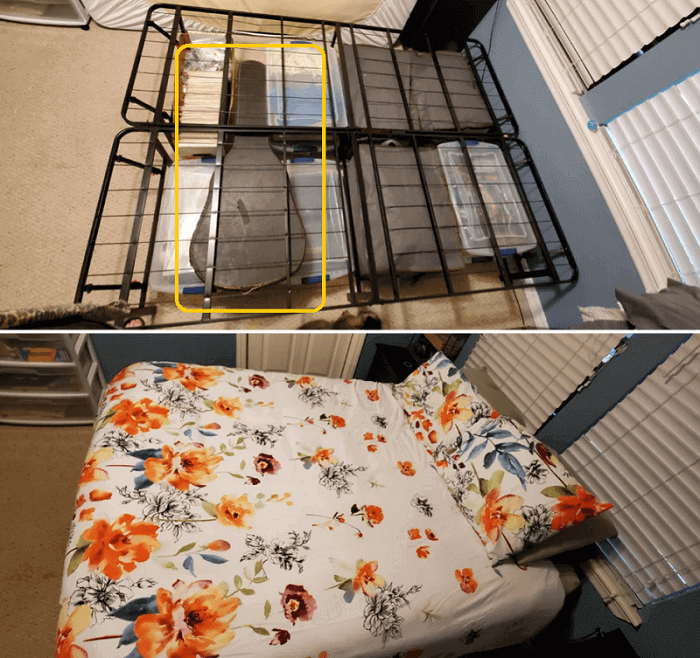
Image Source: u/rotatingchicken on Reddit
This is especially needed if you have a weaker or older instrument that doesn’t come with an adjustable rod.
Besides that, regardless of how you store your guitar, it would be better for you to keep an eye on it or even play it from time-to-time.

This is because the neck always gives up a little, resulting in gradual and minimal changes that over time will make a huge difference.
Best guitar storage tips to keep your instrument safe
Whether you own one special guitar or have several guitars to take care of, it is important to know a few storage tips that can instantly not only improve the quality of your instrument but enhance longevity too.
1- Use hard-shell cases
As we all know, the safest way to store your guitars is to keep them in their hard-shell cases.
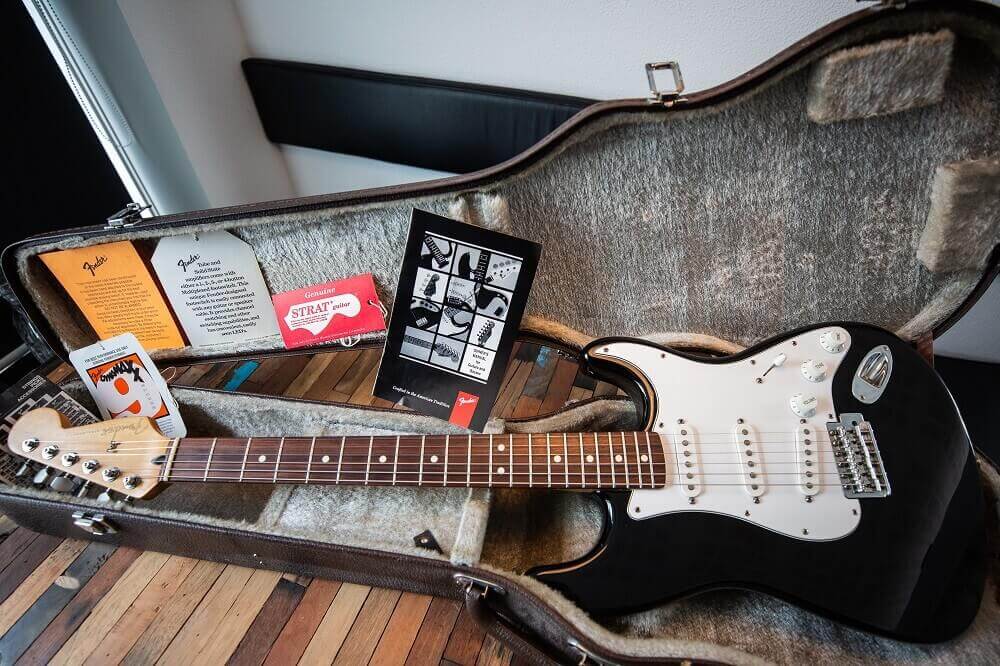
The reason why I specifically mention “hard-shell” is that many people go with an ill-fitted chipboard case and think their guitar is safe against any potential harm.
While those soft cases are better than having nothing, the day that you drop your guitar will be the day that you’ll instantly buy a hard-shell case.
Another thing to note here is to always keep them side by side, vertically rather than laying down on top of each other in case you have more than one guitar.
While this is not a big deal, it’s simply best practice to prevent unnecessary pressure on the cases.
2- Pay attention and control the humidity and temperature around your guitar
A poor environment around your guitar is the leading cause of deteriorating the condition of your instruments.
When it comes to storage, avoid storing it in attics, external walls, and heated rooms since they all tend to have extreme humidity levels that can eventually add significant damage to your guitar.
In fact, overly humidified guitars can actually grow black mold inside or even create permanent structural harm.
Just like excessive humidity can potentially damage your musical instruments, over-dryness can also have the same impact, so make sure that you’re finding the right balance at all times.
According to Fender.com:
The general rule of thumb regarding temperature: If you’re comfortable, your guitar will be, too. Guitars typically like air humidity to fall around the 45-55% range, with an optimal temp of 65-75 degrees Fahrenheit.
Some guitar cases come with their own humidity control that measures the humidity levels around them and adds or removes humidity according to what your guitar currently needs.
This is especially important during the dry winter months where you can’t make an effort to manually check the temperature and humidity in the brittle cold atmosphere.
If that’s not ideal for you, you can always develop creative solutions and place your guitars in a closet with a bowl of water on the floor (not recommended but can do the job) 🙂
Other than that, if you have a collection of valuable guitars, it’s never a bad idea to get whole-house humidifier systems that will make sure to keep your expensive guitars in excellent conditions.
You should definitely watch this YouTube video by Acoustic Life:
In my opinion, every guitar player should watch this video at some point.
It will not only show you how to properly humidify your guitar, but it will also help you understand how to prevent yourself from overusing the humidifier up to the point where you damage your instrument.
In case one of your guitar strings breaks:
3- Loosen all strings one or two half steps
Although you don’t need regular string tension during storage, having no tension can also lead to neck bowing problems.
This is where there’s a little bit of a paradox among all guitar players, and where the discussion really starts.
While some people say that having your guitar tuned when you’re not playing for a long time is bad, some others say that not having strings at all is just as bad.
My solution to this?
Well, to be on the safer side, you can opt-out for loosening your strings one or two half steps.
This way, you will be getting the best of both worlds.
But still, your best bet is to do exactly what your instrument needs according to the factors that we previously mentioned.
4- Detach your guitar neck if applicable
Some guitars are designed specifically to be stored for long periods of time or traveling purposes.
For example, the Voyage-Air Transit Series VAOM-02 Acoustic Guitar:
If you did your research on the previous points that we introduced before, then by now you should already know a thing or two about your guitar neck and what it was made with.
If your guitar has a removable neck, then you can disattach it whenever you consider it appropriate and needed.
Specifically, like I said, for traveling purposes.
Does your guitar strings gauge make any difference?
The gauge of your guitar strings plays a significant role in the tension of your strings.
This means, selecting the optimal gauge will not only improve your guitar’s durability but can offer excellent playability to make your songs nothing but the best.
Most rock guitars prefer to go for light string gauges of around .009 to .042 since it provides enough flexibility for guitarists to bend them during the performance.
Whereas, Jazz guitarists pick the heavier ones like 0.12 to .052 as it offers a rather fat tone which is highly demanded in such music.
Can you take off all guitar strings at once while in storage?
Although there are many benefits to taking one guitar string simultaneously, like better adjustability, especially for guitars with moveable bridges.
Many guitarists prefer to remove all of the guitar strings at once for added convenience.
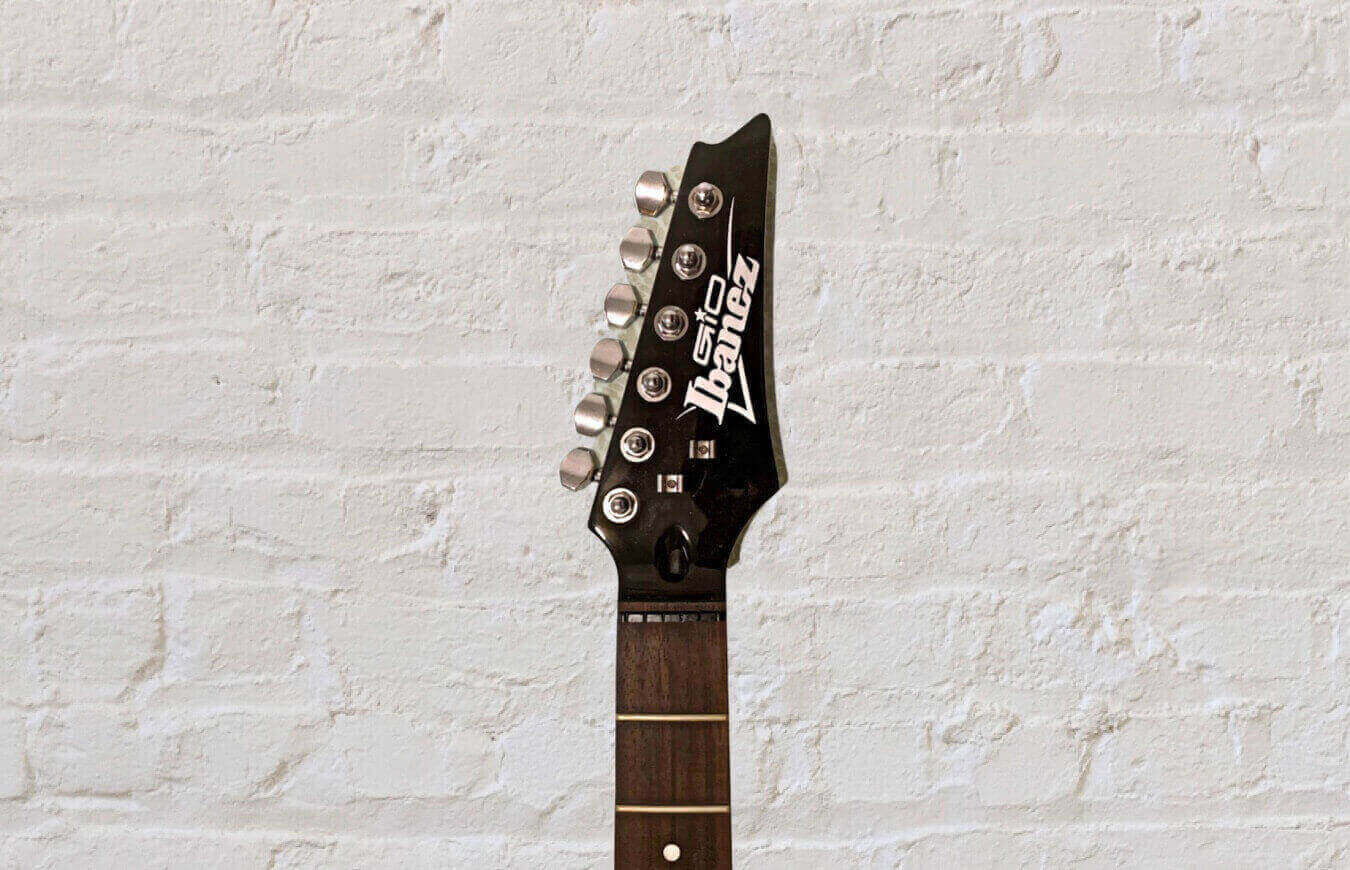
Why is that, you may ask?
This is because it allows you to clean, condition, and lightly polish the fretboard and body immediately after removing the strings.
If you searched for this post online, then you are most likely interested in taking good care of your instrument.
Doing this will do nothing but benefit your guitar.
Do unused guitar strings go bad?
It depends on whether your strings are unopened or have been used before.
Given that guitar strings are made up of copper, steel, iron, and nickel, you can expect them to last for many years.
However, the only thing to bear in mind is to always store them in a cool and dry place.
As for used guitar strings, first of all, before storing them, you need to make sure they have been properly cleaned with no finger oils or dust of any sort.
Even after that, you may need to pay extra attention to the humidity and dryness of the environment to hold the quality well once you start using them again.
Should you loosen your strings when you travel?
Traveling for short distances with a guitar is a lot easier than traveling overseas by air.
When it comes to traveling, a lot of people choose to loosen the strings to prevent expansion and contraction damage.

But is this really necessary?
To be honest, none of this is really necessary since the plane’s cabin and cargo hold are both pressurized and climate-controlled.
Pets go there too, so it only makes sense for it to be in well and stable conditions.
Since you won’t most likely have to deal with any drastic temperature change, you don’t have to worry about it for the most part.
If you know that the place you’re going to will have a different environment with unexpected temperature and humidity, though, then being precautions is never too much.
I would recommend you loosen the strings and opt for a guitar case with a humidifier to take care of any climate changes.
How to maintain the quality of guitar strings when not in use?
As a general rule of thumb, the more vigilant you are with your guitar strings, the longer they’re likely to last and thus make a bang for your buck.
Not cleaning your guitar strings will allow the grime to build up, which can eventually make them idle.
Here are some of the things you can do to maintain the quality of your guitar strings when not in use:
1- Wipe them after each use
The oils from your fingers, when combed with dirt, can instantly ruin your strings a lot faster than they would have been naturally.
Use a soft microfiber cloth to wipe down after each use, or if that’s too much, then at least do it every other day.
Alternatively, you can opt to buy something like a Guitar String Cleaner:
This product is very easy to use and will ensure that both sides of the string get properly cleaned.
2- Use coated strings
Generally, due to corrosion, non-coated strings are likely to wear out quicker than coated strings.
If you frequently like to play and expect your guitar to go through rough wear and tear, it is advisable to go for coated strings.
Doing so can prevent your guitar strings from corroding and hence extend their life significantly.
They will also be less likely to get affected by poor environmental factors than other non-coated strings that you can find on the market today.
According to ErnieBall.com, those who:
- Have high acidity in their sweat.
- Are trying to elongate the time between string changes.
- Looking to get the bang for their buck.
- Seeking to maximize string longevity as much as possible.
Should all consider coated strings instead of uncoated strings.
Conclusion
Now that we have come to an end, the only thing I want you to take away from this post is that although it is not necessary to loosen your guitar strings when not in use, I always recommended doing so if you are not using your guitar for a long time.
You can also just loosen all strings one or two half steps to be on the safer side of both types of opinions.
Also, know that there’s a lot of debate on this topic and that your guitar’s daily care is way more important than any cleaning or maintenance that you do every other month.
As a rule of thumb, just research and look up what your own guitar manufacturer says through their manuals and care guides.

Dad, husband, son, and guitarist. I’ve been playing guitar for 20 years. Passion for writing, painting, and photography. I love exploring nature, and spending time with my family. Currently have a Gretsch G5220 Electric Guitar as my main instrument.

